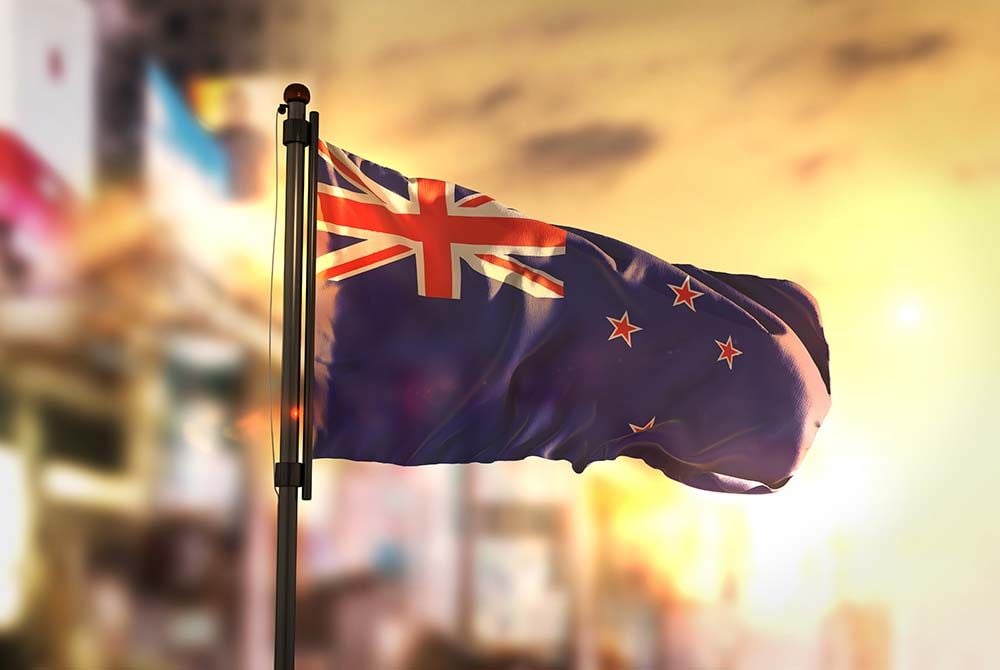New Zealand Dollar Lifted by Budget Update as Analysts Forecast More Gains Ahead
- Written by: James Skinner
-

© Natanael Ginting, Adobe Stock
- NZD lifted by budget update, dissipating 'trade war' risk.
- Gov says surplus to rise, debt to fall, economy to motor on.
- As ABN Amro forecasts 2019 rate hikes and an NZD recovery.
The New Zealand Dollar received a boost Thursday after the government opened its books to the market, revealing a financial position in rude health, while analysts are still predicting further gains for the Kiwi up ahead.
New Zealand's government said Thursday it will beat its target for reducing the national debt to 20% of GDP before the end of 2021, with the level of debt-to-GDP now forecast to come in at 19% for that year.
“Our careful management of the Government’s books gives us the ability to make important investments in public services for all New Zealanders. We’re also continuing our plan to invest a net $42 billion in capital and infrastructure over the next five years, which is before further Budget decisions are made,” says Grant Robertson, New Zealand's finance minister.
The balance sheet improvement comes through a stronger operating budget surplus now projected to rise from $1.7 billion in the current year to $8.4 billion by the end of 2022. This results from strong GDP growth of around 3% that persists for much of the forecast period.
New Zealand's balance sheet is projected to strengthen even after the government's ongoing splurge on its 'families package' alongside measures to promote access to higher education and increased house-building.
"The operating balance estimates were good, supporting the recent strength in the NZD. The Operating Balance Excluding Gains and Losses (OBEGAL) is expected to increase gradually from a surplus of 0.6% of GDP in 2018/19 through to a surplus of 2.3% of GDP in 2022/23," says Joseph Capurso, a currency strategist at Commonwealth Bank of Australia.
Robust levels of economic growth will support market hopes for a recovery of inflation, with the latter being a prerequisite if the Reserve Bank of New Zealand (RBNZ) is to lift its interest rate from its current record low of 1.75%. Keeping optimism about that rate hike alive is in turn essential to a sustainable recovery of the New Zealand Dollar.
Meanwhile, a strengthening public purse will ensure the government has the tool box necessary to deal with any economic turbulence encountered by New Zealand over the coming years. That could well come from the international environment, if the White House continues its tariff fight with New Zealand's largest trade partner, China.

Above: NZD/USD (red & blue) at daily intervals with NZ-U.S. 2-year yield spread (orange).
The NZD/USD rate was quoted 0.08% higher at 0.6863 Thursday and is now down just -3% for 2108 after paring back an earlier -8% loss.
Wednesday's price action was in part the result of signs the G20 agreement struck by Presidents Xi Jingping and Donald Trump is slowly but surely leading to a deescalation of the so-called trade war.
The Pound-to-Kiwi rate was 0.04% higher at 1.8414 after the UK Prime Minister survived a leadership challenge, but it's down by -2.9% for 2018.

Above: GBP/NZD (red & blue) at daily intervals with GB-NZ 2-year yield spread (orange).
Strategists at ABN Amro told clients in December that they expect the New Zealand Dollar to recover substantially during the 2019 year.
"Our New Zealand dollar position is driven by our above-consensus expectations of higher yields in New Zealand," says Georgette Boele, a strategist at ABN, in a note to clients. "Positive economic data will fuel speculation that the central bank will start its hiking cycle in late 2019. We expect one rate hike of 25bp in 2019 and two rate hikes of 25bp in 2020."
What once looked like a deteriorating growth and inflation outlook led the Reserve Bank of New Zealand to warn in July that it could cut Kiwi interest rates in 2019 if things do not improve toward year-end.
With the U.S. Federal Reserve and other central banks looking to raise their interest rates, the RBNZ's statement dealt a crushing blow to an already-beleaguered New Zealand Dollar.
But since then data for the second quarter has shown the Kiwi economy growing faster than many had expected and inflation rising by a fraction.
Unemployment has also fallen further over recent months and government spending is expected to support growth over the coming quarters.
"The RBNZ rate hike expectations will also come at a time that we expect the Fed to have stopped its hiking cycle and 2y US Treasury yields will start pricing in the possibility of rate cuts in a two year horizon. The New Zealand dollar will also profit from weaker US dollar fundamentals," Boele says.
If Boele is right with her Kiwi and U.S. interest rate forecasts then next year could bring a reversal of a 2018 monetary policy trend that was behind the once sizeable 2018 dent in the New Zealand currency.
Boele and the ABN Amro team forecast the New Zealand Dollar rate will hold around 0.68 until year-end before rising more than 10% to 0.75 in 2019.
They expect that to keep the Pound-to-Kiwi rate steady till year-end, although a resolution of Brexit-related uncertainty is forecast to push the exchange rate back up to 1.93 before the end of 2019.
Advertisement
Bank-beating exchange rates. Get up to 5% more foreign exchange by using a specialist provider to get closer to the real market rate and avoid the gaping spreads charged by your bank when providing currency. Learn more here




